 by "ttyymmnn" (ttyymmnn)
by "ttyymmnn" (ttyymmnn)
Published 03/31/2017 at 12:36
 by "ttyymmnn" (ttyymmnn)
by "ttyymmnn" (ttyymmnn)
Published 03/31/2017 at 12:36
Tags: Planelopnik
; planelopnik history
STARS: 7
Welcome to This Date in Aviation History , getting you caught up on milestones, important historical events and people in aviation from March 29 through March 31.
!!! UNKNOWN CONTENT TYPE !!!
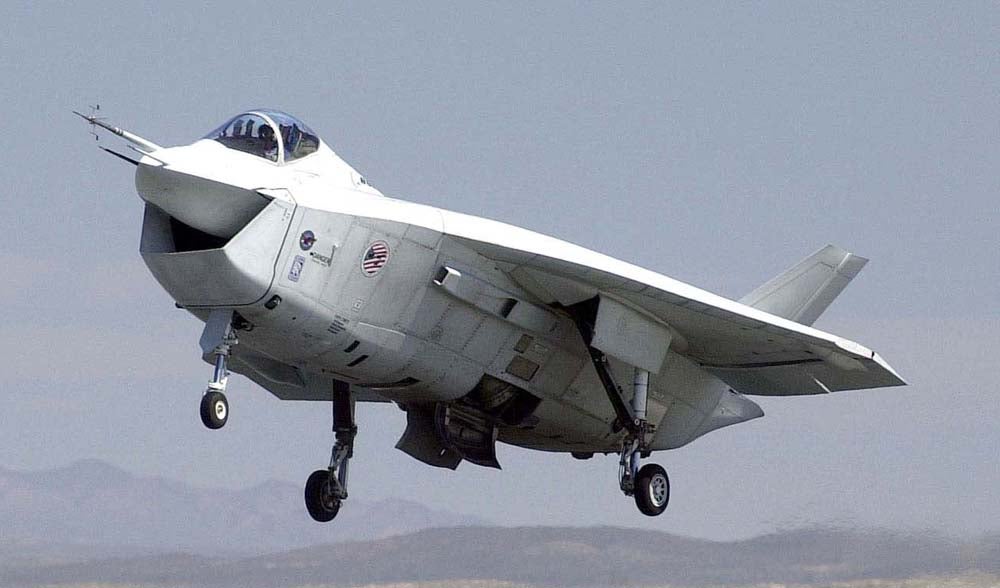
March 29, 2001 – The first flight of the X-32B Joint Strike Fighter. In 1960, both the US Air Force and US Navy were looking to develop a new airplane, and Defense Secretary Robert McNamara directed the two services to work together on an aircraft that would serve both branches in an effort to save money. The result of that directive was the Tactical Fighter Experimental (TFX) program that led to the development of the General Dynamics F-111 . But it soon became clear that the two services had very different missions in mind for the aircraft, and the Navy eventually dropped out of the program to pursue the Grumman F-14 Tomcat instead. The moral of that story is that, no matter how hard you try, it is extraordinarily difficult to make a single aircraft that can fulfill such disparate roles. But that didn’t stop the US Department of Defense (DoD) from trying the same thing again, but this time, with a fighter for all three fixed-wing services (the last to do that successfully was the McDonnell Douglas F-4 Phantom II ). Through the merger of various ongoing aircraft procurement programs, the Joint Strike Fighter program was launched in 1993 to develop a single basic airframe that could fulfill the strike, fighter, and ground attack roles, be capable of short takeoff and vertical landing (STOVL), and employ stealth technology. Boeing and Lockheed Martin were chosen to build prototypes, which became the X-32 and X-35 respectively. Though both aircraft shared the same mission parameters, the two companies tried to solve the design challenges in very different ways. The two companies were not allowed to use their own money for development and had to act on a limited budget provided by the DoD. Boeing’s goal was to create different versions of the fighter with as many common parts as possible, so where Lockheed Martin designed a complex, shaft-driven fan for the STOVL variant of the X-35, Boeing opted for using vectored thrust coming from an engine placed well forward in the fuselage. This engine placement is what gave the X-32 its rather bulky appearance, as well as its pronounced chin intake. But this large intake, with the engine almost directly behind it, had the negative impact of exposing the turbine blades to radar detection, a problem that Boeing had plans to mitigate but were never fully developed. Boeing also chose a single piece, carbon fiber composite delta wing that was capable of holding 20,000 pounds of fuel.
!!! UNKNOWN CONTENT TYPE !!!
However, 8 months into the construction of the prototype, the Navy changed their requirements, and Boeing was forced to redesign the tail of the aircraft. Since there was no time to work those changes into the prototypes before testing began, Boeing was forced to use two different configurations to prove their technology. The X-32A was the conventional takeoff aircraft for the Air Force and Navy (CTOL), while the X-32B was the STOVL demonstrator for the Marine Corps. The first flight of the X-32A took place on September 18, 2000, followed 6 months later by the X-32B. The X-32B was powered by a Pratt & Whitney F119 afterburning turbofan which gave the fighter a top speed Mach 1.6 in level flight. To transition to vertical landing, a butterfly valve redirected the jet output to vectoring nozzles, and attitude was controlled by ducted nozzles on the wingtips and fore and aft on the fuselage. This configuration meant that the X-32B was powered by a direct lift engine, similar to the McDonnell Douglas AV-8B Harrier II . While this arrangement was significantly less complex than the system derived by Lockheed Martin, it had the drawback of being less powerful, and not capable of carrying the same loads. In fact, Boeing had to remove panels to reduce weight for the STOVL test flights. In the end, the X-35 was chosen over the X-32 on October 26, 2001, and that aircraft would go on to become the F-35 Lightning II , an aircraft that has seen significant problems and cost overruns in its development. We will never know if the Boeing aircraft would have been any easier or cheaper to develop. Though Boeing lost the billions of dollars they stood to gain had they won the contract, the X-32 still provided invaluable research data and experience with advanced designs and materials. Both the X-32A and X-32B have been preserved, with the former awaiting restoration at the National Museum of the United States Air Force, and the latter on display at the Patuxent River Naval Air Museum. (US Air Force photo; YouTube )
!!! UNKNOWN CONTENT TYPE !!!
!!! UNKNOWN CONTENT TYPE !!!
!!! UNKNOWN CONTENT TYPE !!!
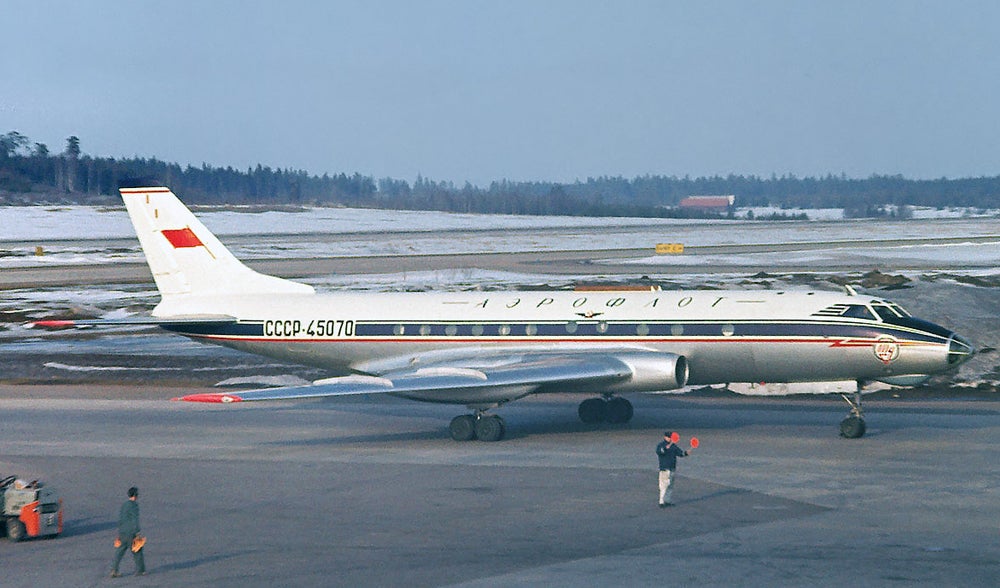
March 29, 1960 – The first flight of the Tupolev Tu-124, a twin engine airliner developed from the Tupolev Tu-104 and designed to meet Aeroflot’s requirement for a new regional airliner to replace the Ilyushin Il-14 . The Tu-124 was powered by a pair of Soloviev D-20P turbofans mounted in the wing roots that were more efficient than the turbojets of the Tu-104, and it could carry up to 56 passengers at a cruising speed of 540 mph with a range of 1,3oo miles. The Tu-124 was introduced in 1962, and was exported to numerous Eastern Bloc countries, as well as India and Iraq. A total of 164 were produced, and it was finally withdrawn from Russian military service in 1992. (Photo by Lars Söderström via Wikimedia Commons )
!!! UNKNOWN CONTENT TYPE !!!
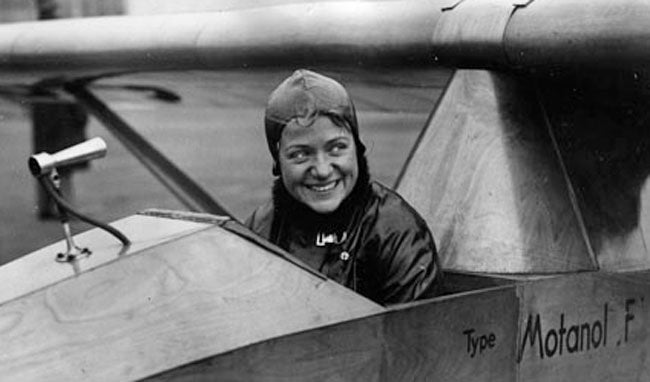
March 29, 1912 – The birth of Hanna Reitsch, a German aviatrix and test pilot and the only woman awarded the Iron Cross First Class and the Luftwaffe Pilot Observer Badge for her service during WWII. Reitsch set over forty altitude and endurance records flying gliders, and served as a test pilot on the Junkers Ju 87 Stuka , Dornier Do 17 and Messerschmitt Me 163 Komet rocket plane. She was the first female helicopter pilot and one of the few to fly the Focke-Achgelis Fa 61 , the world’s first fully controllable helicopter, which she famously demonstrated inside the Deutschlandhalle during the International Automobile Exhibition in Berlin in 1938. Reitsch was captured near the end of the war, and after her release she continued flying gliders, setting yet more records. Reitsch died in 1979. (Photo author unknown)
!!! UNKNOWN CONTENT TYPE !!!

March 30, 2006 – Marcos Pontes becomes the first Brazilian astronaut in space. Pontes was both the first Brazilian and the first Portugese-speaking astronaut when he traveled to the International Space Station (ISS) on board the Russian Soyuz TMA-8 . Trained by NASA and originally slated to go to space on board the Space Shuttle, Pontes transferred to the Russian space program due to delays with the Shuttle program. Pontes spent seven days aboard the ISS conducting experiments before returning to Earth with the departing crew of Expedition 12 on board Soyuz TMA-7 . His flight coincided with celebrations around the 100th anniversary of the first flight by Brazilian aviation pioneer Alberto Santos-Dumont in 1906. (Photo via Alchetron )
!!! UNKNOWN CONTENT TYPE !!!
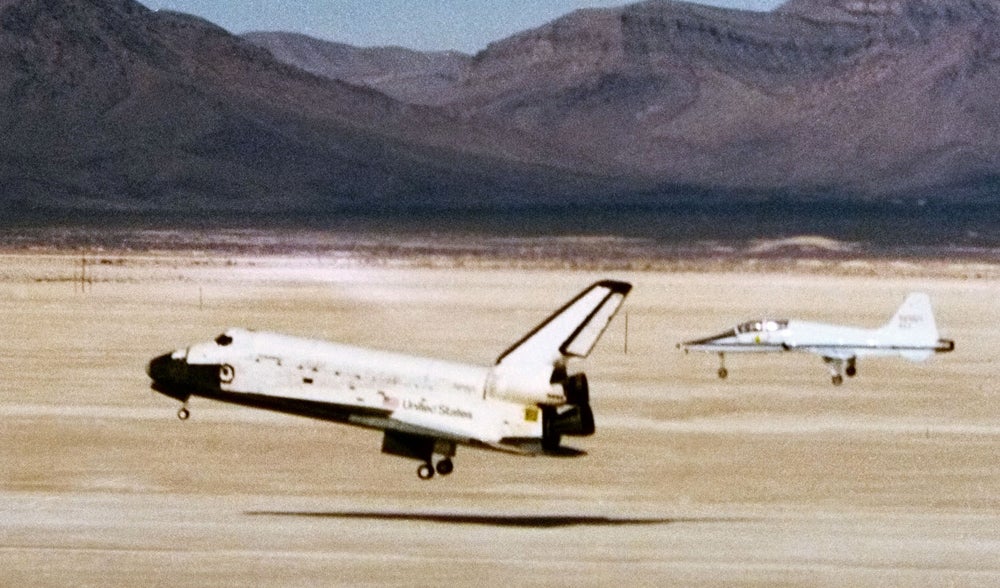
March 30, 1982 – Space Shuttle Columbia lands at White Sands, New Mexico. Following the 3rd mission of the Space Shuttle Program ( STS-3 ), Columbia landed on Northrop Strip at White Sands (now called White Sands Space Harbor ) after an 8-day mission to test Shuttle endurance and perform scientific experiments. Columbia was originally slated to land at Edwards Air Force Base in California, but heavy rains had flooded the landing site, necessitating the switch to White Sands. The landing site at the Kennedy Space Center in Florida was also available, but Shuttle pilots opted for White Sands since they had trained there and were more familiar with the location. It was the only time in the Shuttle Program that a Shuttle landed at a site other than Edwards or Kennedy Space Center. (NASA photo)
!!! UNKNOWN CONTENT TYPE !!!
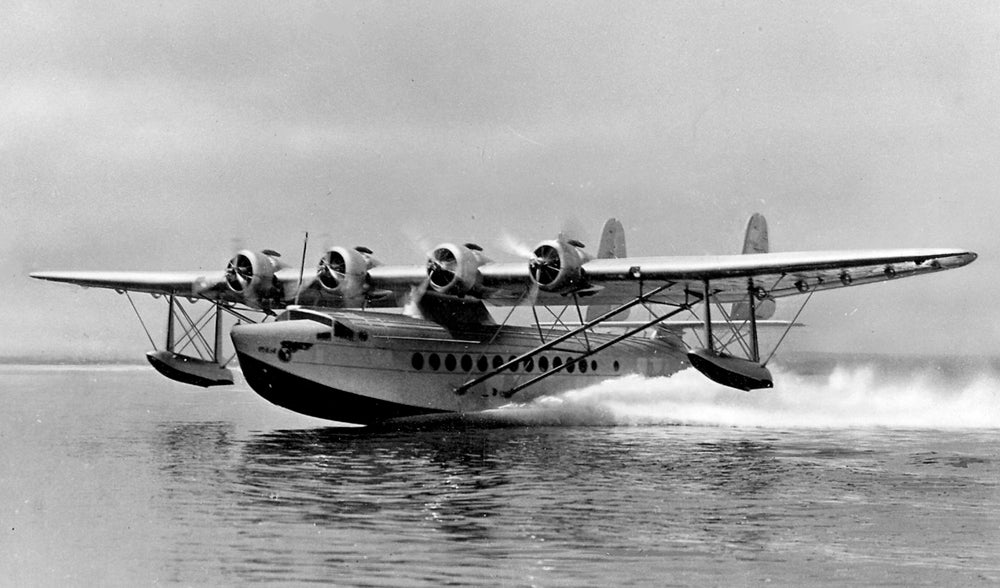
March 30, 1934 – The first flight of the Sikorsky S-42. While Igor Sikorsky is perhaps best known for designing helicopters, he got his start in aviation by building large fixed-wing aircraft, particularly flying boats. The S-42 was developed to meet a requirement by Pan Am for a long-range flying boat, and included many innovative features such as wing flaps and variable-pitch propellers . The S-42 was powered by four Pratt & Whitney R-1690 Hornet radial engines and, during testing, the S-42 set numerous payload records. The S-42 carried up to 37 passengers or 14 sleeper berths, and a total of 10 were produced. (US Navy photo)
!!! UNKNOWN CONTENT TYPE !!!
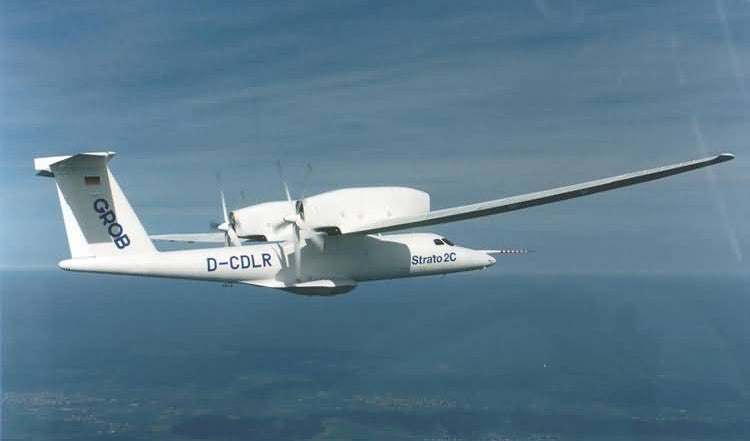
March 31, 1995 – The first flight of the Grob Strato 2C, an experimental high-altitude research aircraft built by Germany. The Strato 2C was powered by two turbocharged piston engines and had a service ceiling of almost 79,000 feet. With a wingspan of just over 185 feet, it was designed to remain aloft for up to 48 hours. In 1995, the Strato 2C set a world record for altitude by a piston-powered aircraft of 60,897 feet, but cost overruns eventually led to the cancellation of the project in 1996. (Photo via 1000aircraftphotos.com)
!!! UNKNOWN CONTENT TYPE !!!
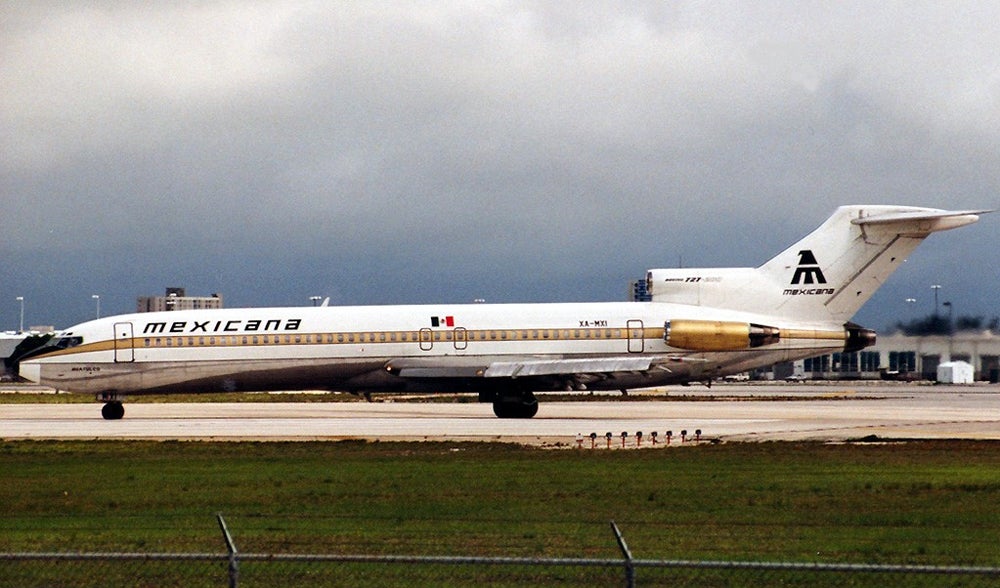
March 31, 1986 – The crash of Mexicana Flight 940. Mexicana 940 was a scheduled flight from from Mexico City to Los Angeles via Puerto Vallarta when an onboard explosion and fire caused the plane to crash in the Sierra Madre Occidental mountain range while the crew attempted a return to Mexico City. Speculation at first focused on terrorism, but the investigation found that ground crews had inflated a tire with compressed air rather than nitrogen, which caused the tire to explode at altitude, and a ruptured fuel line led to the fire. The crash killed all 167 passengers and crew, making it the deadliest air disaster on Mexican soil and the worst disaster involving a Boeing 727 . (Photo—not accident aircraft—by JetPix via Wikimedia Commons )
!!! UNKNOWN CONTENT TYPE !!!
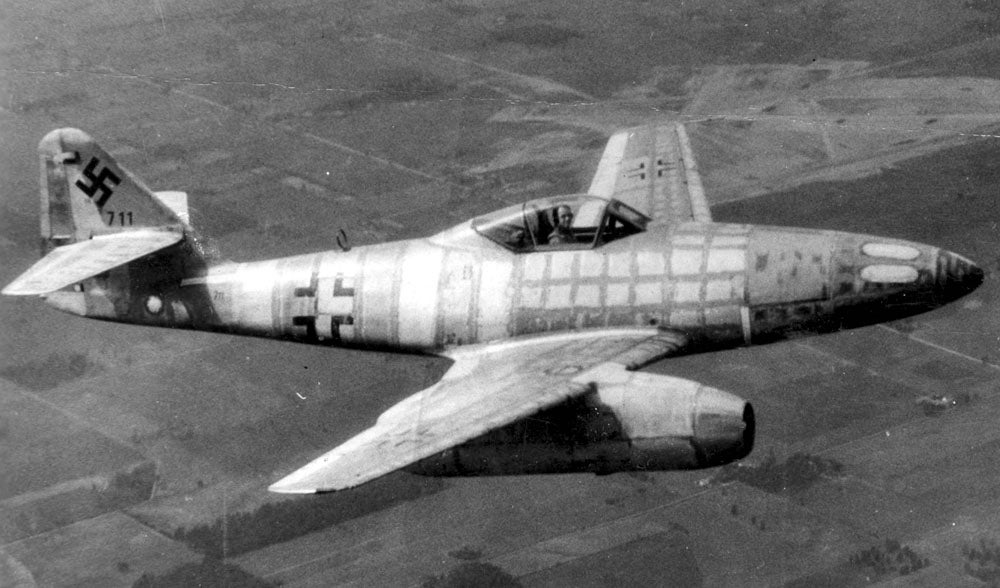
March 31, 1945 – Luftwaffe pilot Hans Fay defects, delivering a Messerschmitt Me 262 jet fighter to the Allies. Fey was a test pilot and instructor who was tasked with flying 1 of 22 new Me 262s from Schwabish-Hall to Neuberg an der Donau for safe keeping. Instead, Fay turned his fighter towards Frankfurt, where he landed and delivered the fighter to the Americans. The aircraft was then transported to the United States, where flight tests were carried out at Wright Field in Dayton, Ohio. However, during a test flight on August 20, 1946, an engine failure lead to the loss of the aircraft, with the American test pilot parachuting to safety. Tests of the Me 262 provided invaluable data on the development of future Allied jet fighters. (US Air Force photo)
!!! UNKNOWN CONTENT TYPE !!!
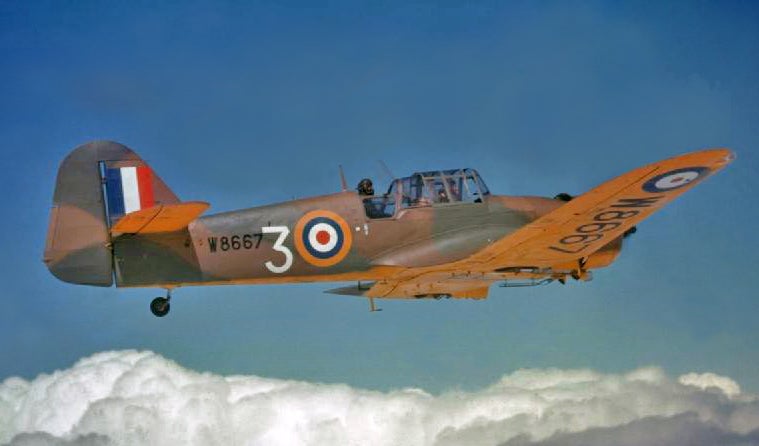
March 31, 1939 – The first flight of the Miles Master,
a two-seat trainer adopted by the Royal Air Force and Fleet Air Arm as an advanced trainer. The Master was developed from the earlier
Miles M.9 Kestrel
, and was adopted when the
de Havilland Don
turned out to be unacceptable. The Master was fast enough to give students an idea of what to expect in more powerful fighters like the
Hawker Hurricane
and
Supermarine Spitfire
, and also powerful enough to work as a glider tug. Some were even pressed into service as a fighter during the
Battle of Britain
. A total of 3,250 Masters were produced.
(UK government photo)
!!! UNKNOWN CONTENT TYPE !!!
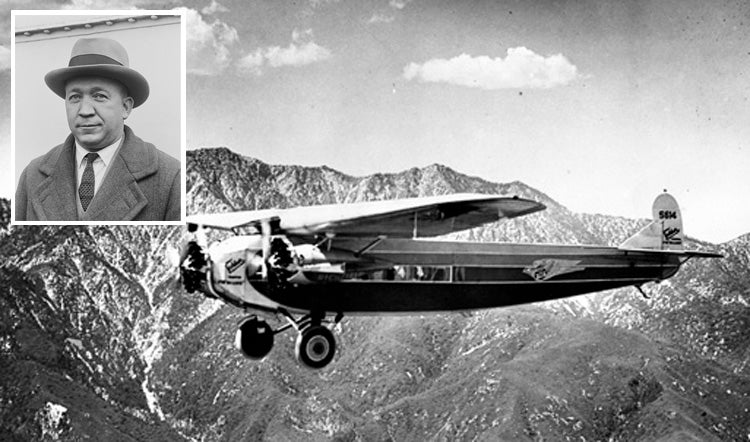
March 31, 1931 – The crash of TWA Flight 599, scheduled Fokker F.10 trimotor (NC999E) service from Kansas City, Missouri to Los Angeles, California. During the flight, the wooden laminate wing reportedly failed and the plane crashed near Bazaar, Kansas, killing all 8 passengers and crew including famed University of Notre Dame football coach Knute Rockne . The death of such a popular sporting figure almost led to the demise of TWA, but it also spurred significant changes in air travel in the US. All Fokker trimotors were grounded for inspection, and the outcry for information about the investigation led the Department of Commerce to halt its practice of keeping crash investigations secret. The crash also led to a call for all crashes to be publicized, which in turn led to higher safety standards in the airline industry. (Rockne photo via US Library of Congress; Fokker F.10 photo—not accident aircraft—via San Diego Air and Space Museum)
!!! UNKNOWN CONTENT TYPE !!!
!!! UNKNOWN CONTENT TYPE !!!
!!! UNKNOWN CONTENT TYPE !!!
!!! UNKNOWN CONTENT TYPE !!!
!!! UNKNOWN CONTENT TYPE !!!
!!! UNKNOWN CONTENT TYPE !!!
!!! UNKNOWN CONTENT TYPE !!!
If you enjoy these Aviation History posts, please let me know in the comments. And if you missed any of the past articles, you can find them all at Planelopnik History . You can also find more stories about aviation and aviators at Wingspan and Planes You’ve (Probably) Never Heard Of .
!!! UNKNOWN CONTENT TYPE !!!
 "Smallbear wants a modern Syclone, local Maple Leafs spammer" (smallbear94)
"Smallbear wants a modern Syclone, local Maple Leafs spammer" (smallbear94)
03/31/2017 at 12:56, STARS: 1
The Knute Rockne crash was in fact directly responsible for the development of the modern airliner. Following the evidence that the crash was caused by rot in the wing the government mandated regular inspections of all wood-construction aircraft. This proved extremely costly and sent TWA’s President (Jack Frye at the time iirc) shopping for new planes. His first choice was the Boeing 247, but the entire production run had already been committed to United (which had business ties to Boeing). He then went to Douglas with a list of requirements and the rest is history. It’s interesting to note that Frye preferred a trimotor aircraft, but Douglas chose not to based largely on the fact that the Knute Rockne crash had been bad PR for trimotors in general, and instead settled on the same layout as the 247. The crash therefore not only set in place the blocks that would render metal aircraft cheaper than wood but also influenced a basic design that has remained largely unchanged since.
 "jariten1781" (jariten1781)
"jariten1781" (jariten1781)
03/31/2017 at 13:28, STARS: 3
Hans Fay
’
s whole story is very interesting.
Going from memory here.
His entire family was vehemently anti-Nazi and ended up on numerous watch lists before and during the war. Despite that he, his brother, and his sister all were drafted. His brother died fairly early on in Poland and his sister was assigned to a searchlight battery but went AWOL at her first leave and went into hiding.
Hans, himself, was a mechanic/engineer with pilot training that specifically tracked himself into an instructor and test role both due to his interests and because he found it distasteful to actively fight people he felt more kinship to than his own government. He had apparently been intending to defect the entire war, which the American
’
s verified by reviewing numerous coded letters he
’
d been sending his parents, however he was afraid that the Nazis would retaliate by going after his family if he did.
As soon as the Allies took his hometown he decided to make a go of it.
Then, when he was running off the landing gear failed to retract and he figured he was doomed and that someone would come after him or his fuel would be expended due to all the extra drag. Had to fly the whole route at low throttle and he stuck to just above tree height to stay as masked as possible. Eventually he realized that he wouldn
’
t make it to his hometown, where he was planning to go so, without a map, he found the autobahn and flew right above it all the way into Frankfurt.
Then, when he got to the airfield all the runways were bombed out so he just had to pick a path amongst the craters and hope he didn
’
t catch debris and break apart. Afterwards he offered to perform his services for the US (fly captured planes in mock air fights, hand over all the tech specs he knew, give detailed info on how they were trained and what tactics, etc.) as now that his family was safe his only desire was to see the German people saved from Nazi rule. They never had him fly, but they continually shuffled him between London and Paris to provide technical intel and training to pilots.
Cool dude.
 "RallyWrench" (rndlitebmw)
"RallyWrench" (rndlitebmw)
03/31/2017 at 13:45, STARS: 3
If the F35 does anything well, it’s look better than the X32.

03/31/2017 at 13:56, STARS: 2
I still say they should have finished developing the X-32 STOVL for the Marines as the A-32 Corsair III (aka SLUF II).
 "ttyymmnn" (ttyymmnn)
"ttyymmnn" (ttyymmnn)
03/31/2017 at 14:33, STARS: 0
Thanks for all of that!